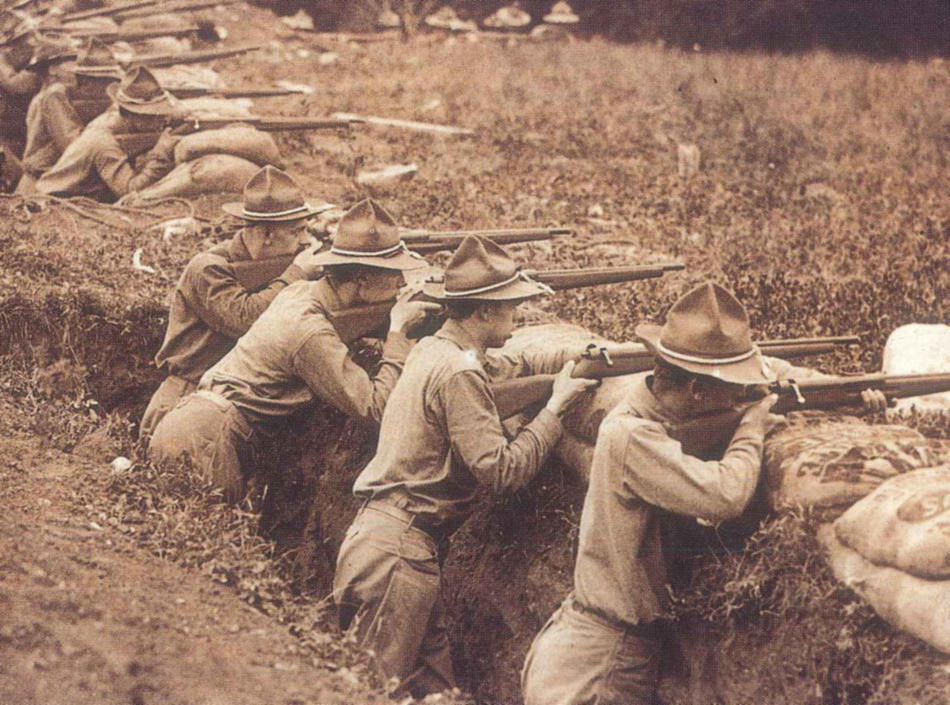World War I, which ended 90 years ago this past November, mobilized Columbia like no conflict before it. Whereas the Revolutionary War had shut down King's College, the Great War turned Columbia's Morningside campus into a hive of political and military activity. In the run-up to America's entry into battle, hundreds of students participated in officer training corps; and an instructional program for the building and maintenance of gas engines was so effective that it was federalized. Government programs in radio technology and cinematography were also housed on campus.
University president Nicholas Murray Butler marshaled Columbia's manpower and scientific resources toward the war effort and brooked no dissent from faculty, leading famously to the resignation, in 1917, of history professor Charles Austin Beard.
More than 200 Columbians lost their lives in the war, including the poet Alfred Joyce Kilmer 1908CC, and Amabel Scharff Roberts 1916NRS, the University's lone World War I female casualty. But the University was also instrumental in saving lives: many students and alumni from the College of Physicians and Surgeons provided medical service in Europe, and alumni raised money to send over a fleet of ambulances.



